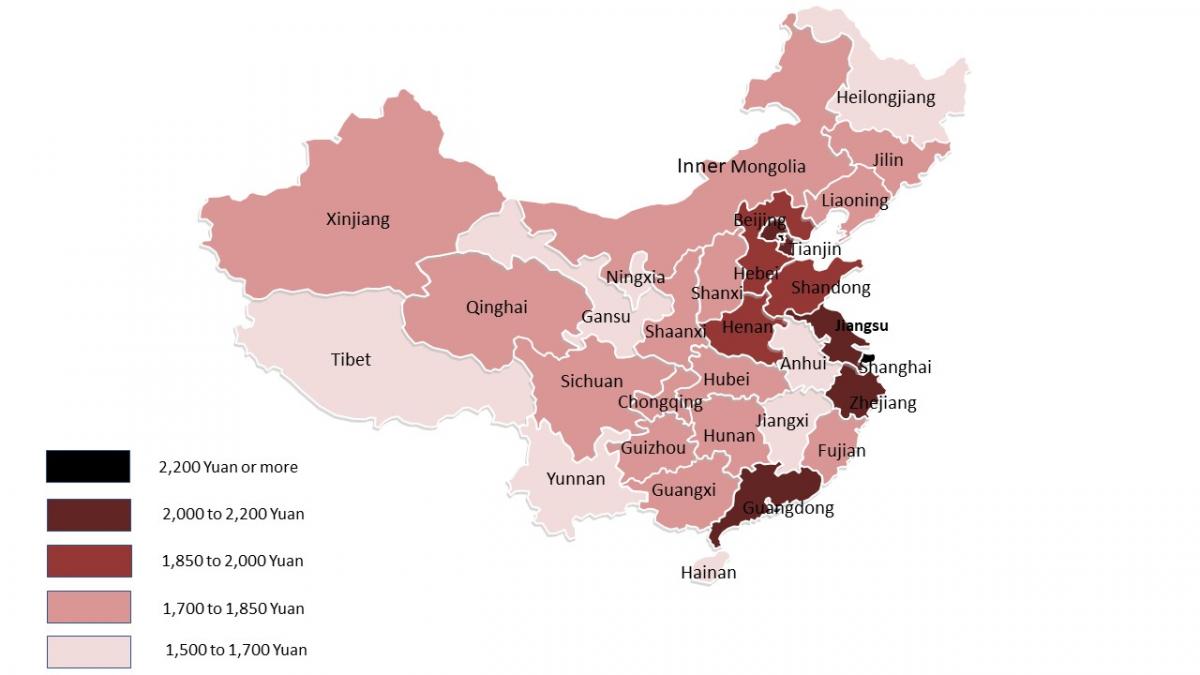Less than a third of China’s regional governments have increased or announced increases in the minimum wage so far this year in spite of a sharp increase in the cost of living.
Less than a third of China’s regional governments have increased or announced increases in the minimum wage so far this year in spite of a sharp increase in the cost of living.

China’s consumer price index jumped to 3.8 percent in October and analysts expect inflation to stay above the three percent mark for the next two years at least. Pork prices have more than doubled this year, while the price of poultry has gone up by 67 percent, and this has already had a big impact on the day-to-day expenditure of low-paid workers in China.
However, many regional governments are still reluctant to raise the minimum wage out of concerns it will further hurt business owners in the midst of an economic downturn and the trade war with the United States.
So far this year, only eight of the 32 regional governments with authority to adjust the statutory minimum wage have done so, with another two announcing increases that will take effect on 1 January next year. The largest increase this year was in Chongqing, which increased its monthly minimum wage by 300 yuan to 1,800 yuan in central districts and 1,700 yuan in outlying districts on 1 January. However, this adjustment only came after a three-year minimum wage freeze in the municipality.
Shanghai currently has the highest monthly minimum wage rate in China after it raised it by 60 yuan to 2,480 yuan on 1 April. Beijing increased its monthly rate from 2,120 to 2,200 yuan on 1 July, putting it equal second with Shenzhen, which did not adjust its rate this year. Beijing now has the highest hourly rate of 24 yuan, just above Shanghai’s rate of 22 yuan per hour.
There are currently seven regional governments with a minimum wage rate higher than 2,000 yuan per month. However, the lowest rates in poorer provinces are still not much above 1,000 yuan per month. The lowest rate in Liaoning, which raised the minimum wage on 1 November, is 1,300 per month, while in Hunan, which increased its rates in October, the lowest rate is 1,220 yuan per month.
Minimum wage levels in China by region (based on highest monthly rate in each region) effective 1 January 2020

National regulations state that regional governments should adjust the minimum wage every two years. However, after Guangdong announced in 2017 that it would make adjustments every three years, other provinces started to follow suit. Currently, Tianjin, Shanxi, Inner Mongolia, Jilin, Heilongjiang, Hubei, Gansu and Ningxia have all gone longer than two years without an announced increase.
Regulations also stipulate that each region should set its minimum wage at between 40 and 60 percent of the local average wage however very few regions have ever reached that target. Moreover, in most regions the statutory minimum is very far from being a living wage and the situation is likely to deteriorate further if local governments continue to delay increases.
We have yet to see a noticeable increase in the number of strikes and protests by workers demanding a pay increase but unless regional governments act soon to protect low-paid employees, workers will most likely start to take action themselves, just as they did in the early 2010s when inflation exceeded five percent. See CLB’s research report Unity is Strength: The Workers’ Movement in China 2009-2011 for a detailed examination of the strikes for higher pay during this period.
